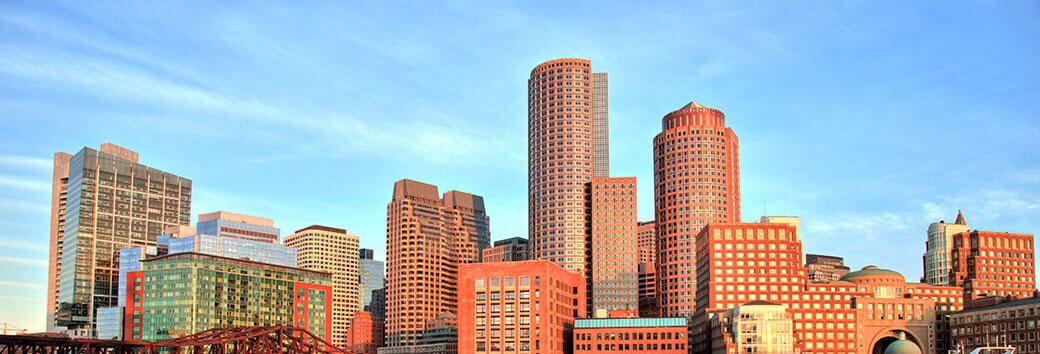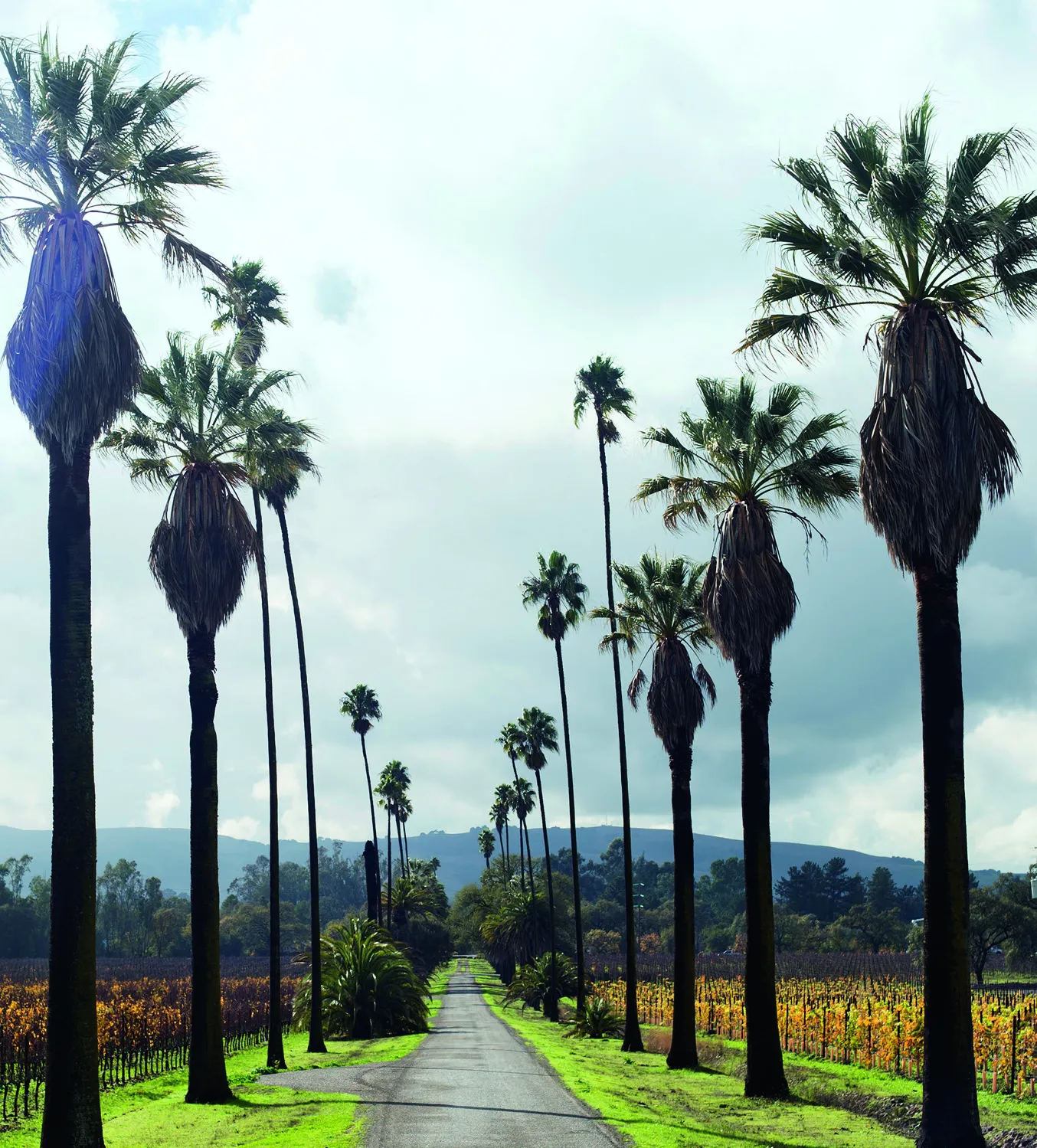Travel in the most European of American cities
From the airport, located a few kilometers north of the city, Boston appears as a maritime city.Everywhere, water, the ocean, the deep water port which made the initial fortune of the city, the rivers (the Charles) of the peninsulas, of the islands which sometimes are no longer, the city s'being extended to the sea, allowing the creation of a belt of parks.In good weather, which was the case in October, Boston has a city of water, the blue of the sea and rivers, sailing boats, some bathers, green, gold andred parks, since Indian summer was in full swing.
European as at home
The European could almost believe himself at home.There is a historic center visited by many American or European tourists, streets where you can stroll, public transport (a metro-trans) of greenery and congestion at the start and end of the day.The possibilities of eating inexpensive are even more developed than in Europe.In Quincy Market, skillfully renovated warehouses, dozens of restaurants offer kitchens for all tastes.It is not gastronomic, the fish, however, offers some good surprises (clam chowder, salmon) and the pancakes can be watered with maple syrup.The crowd is white, the colored minorities being less visible than in New York or in Chicago but the more numerous obese (it is one of the big subjects in daily newspapers as in magazines).
A city of hills
Certainly the scrapes are there but they are less spectacular and successful than in these two cities.The most beautiful, the John Hancock Tower (60 floors) of the Chinese architect Pei, a sort of book slightly open vertically, is at certain times of the day a huge bluish mirror where the masterpiece is reflected "RomanesqueFrom Henry Richardson, Trinity Church (1877) made of granite and pink sandstone, which is inspired by European cathedrals.A short distance away, the fiftieth floor of the prudential tower offers a breathtaking, 360 degree views of the city and its surroundings.If you want to understand the beginnings of the rebellion against the English, this vision is useful, because Boston was a city of hills (some were leveled during enlargements in the 19th) and many events occurred on these places both d'observations and battle, which can be distinguished from the top of the tower.
The historic boston
Many Americans come here on pilgrimage.It is in Boston that the revolt of the 13 colonies against England of George III began.The descendants of the Puritans, who left the mother country to practice the religion of their choice and seek fortune, no longer agreed to be treated as good -class subjects to fill the empty boxes of the crown after the war ofseven years.Not represented in Westminster, they opposed the principle "no taxation without representation".The places of memory are very frequented.Many buildings, Georgian style, in brick and stone, with columns and in Doric pediment, have been kept.As no protection perimeter has been planned, they are hardly highlighted and rub shoulders with buildings or rounds of the 20th century often mediocre.
It all started on March 5, 1770
It all started on March 5, 1770 at Old State House, where the English governor resided, who had the settlers fired.There were five dead- including a black "found" ten years ago and this bloody event is called the "Boston Massacer".On the balcony, in 1776, was read for the first time in public the declaration of independence.At Old South Meeting House, the great speakers of the Revolution, Samuel Adams and James Otis incited their compatriots to follow them.It was the starting point of the Boston Tea Party (a cargo of tea thrown into the sea).This house was a puritanic church, that is to say without altar or statues, where believers gathered around the pulpit to listen to the preacher commenting the Bible.The elegant King's Chapel, today Anglican church, is inspired by the same principles: light stained glass indicating the opening to the world, the pulpit dominating the altar and the communion table.Another meeting room was in the Faneuil Hall, "one of the cradles of freedom" still in Georgian style, which was enlarged after the revolution and whose second floor was transformed into a museum room.
Cemeteries, small and old, are moving by their simplicity, a stone without cross (we think of Muslim cemeteries) often with a decorative motif, a engraved skull surrounded by two angel wings.They host the burials of the heroes of the Revolution and the great Bostonian families as well as a few blacks, the servants of great bourgeois rewarded for their fidelity in eternity.An older wooden house, largely renovated, is that of Paul Revere, a founder and talented goldsmith, a mythical character of the Revolution.Member of one of the brotherhoods in which the Revolution was prepared, "the sons of freedom" he accomplished many missions for the revolutionary cause, including a mission, on horseback and by boat, in order to transmit information on the movements of the Redu Cotasthus avoiding a defeat of the colonists.The house, its furnishings, its silverware- which is sometimes his work- shows that the hero knew how to acquire more than honest ease.
The English abandoned the city in 1776
Bunker Hill is one of the hills where one of the fights against the colonizer was held (June 16, 1775).Located today in a opulent and green district, it is crowned with an obelisk (we can climb up) built in 1846, which recalls a lost but particularly murderous battle for the English (1000 out of 2200 men committed).Having stood up to the first army in the world strongly encouraged the colonists to continue.Thomas Park is the place of the last confrontation.Washington deployed cannon batteries and had the residence shot.He was afraid and decided to evacuate the city (March 1776) which was never taken over, even during the Second War from 1812 to 1814 (unlike New York) the historical reconstructions involving the participation of citizens playing in clothes'era, which do not spare their efforts here are a great success.So you can get on board the Beaver, one of the three boats, on which the Tea Party took place.
Segregation in schools until 1855
But Boston is also a place of pilgrimage for blacks (the Black Heritage Trail).Slavery was abolished there in 1783 but segregation was maintained in schools until 1855.The first church (1806) known as African Meeting House and the first school for blacks, on the northern slope of Beacon Hill, are moving places, despite departure to the 19th of the black population.The church, simple and stripped, was even recently bought from the Jewish community.
Bostonian blacks played an active role in the fight against slavery.An abolitionist newspaper, The Liberator, was born (1831).Routes were organized for fugitive slaves who were hidden in cellars and undergrounds of houses of Beacon Hill (Underground Trail Road) at the risk of the owners.Plates have been affixed to the walls of these heroes, some of which were whites.In 1863, a black regiment, commanded by a white officer fought against the southern slave and lost half of his workforce, including the officer.A low bronze relief in honor of the 54th regiment was erected in the central park (Commons) in 1897.On the southern slope of Beacon Hill lived "whites".The neighborhood has kept its character.The alleys, steep, sometimes paved with pebbles (acorn street), have a lot of cachet.Louisburg Street is a private London fashion park, it is surrounded by houses with neoclassical facades (19th), whose owners have been or are famous Bostonians.
Massachusetts...an Indian tribe
Nearby, a Georgian style house, with Palladian windows, built by the great architect of Boston, Charles Bullfinch, was admirably restored.The first owner, Hg Otis, father of eleven children, lawyer and politician was part of the rich Bostonian "aristocracy".Large reception rooms are organized around large fireplaces decorated with stucco, according to a symmetrical principle, with false doors.The walls are covered with beautiful wallpapers, whose drawing was found.which create harmonies of blue and green.The furniture (17/18 th century) are of high quality.
Bostonian historical memories are not limited to the war of independence.The golden dome of the State House, which houses the Parliament of the State of Massachusetts (the name of an Indian tribe) and its governor sees himself from afar.It is the work of Charles Bulfinch-Déjà cited (1798) but it was enlarged several times.The building is widely open to the public, even during the chambers sessions.Citizens must be able to look at how the law is made.They parade in a series of majestic halls, admiring the six species of marble used, the historical or mythological frescoes, the bronzes of the heroes of American history, including Lincoln, the flags of the war of independence to that of Vietnam on the backgroundyellow marble, the stained glass windows of John Lafarge and Tiffany.The House of Representatives being in session, only the Senate was accessible.The decor is solemn, colonnades and niches containing statues, contrasting with a club side;Senators are not more numerous than our academicians.
Many Irish immigrants, including Kennedy
Irish immigrants were numerous from 1840.Some became famous.The most famous are the Kennedy.Two buildings recall their presence.The family house, of two floors, in the airy faubourg of Brookline, is modest.Joseph Kennedy has not yet made a fortune when he bought the house in 1914 six years after his wedding.But he wants independent housing, a calm and peaceful environment and the proximity of a Catholic church.The house, bourgeois and comfortable, is firmly run by Rose, the wife and mother of four boys and a girl, mental disabled.This great and beautiful woman, daughter of the first Irish mayor of Boston, considered that the education of five children was equivalent to a full -time job.She exercised her job with great professionalism.She held machine -hit sheets for each child where all significant events were recorded.She applied a strict ritual for meals, forcing children to speak of serious subjects and organizing debates.

She led them to the church.She did not hide her daughter's illness, contributing to the change in mentalities on mental disabilities and she created a specialized foundation, which she took care of.It is one of the rare Kennedy, who was not compromised in scandals.Virtue was a patent of good health.Rose died nonagenarian in 2002.In 1927, Joseph who had made a fortune in the bank, went to settle in New York.The house was sold.After the assassination of the president, Rose bought the house, redeveloped it in conditions close to those which existed in 1914 and put family memories there.The house is managed by a public body dependent on the Ministry of the Interior, the National Park Service.The volume as the quality of the work done by this service is remarkable.Guides are of quality.And especially the visitor has the impression that the houses are inhabited and that we will pass...at table.The accumulation of "realistic" details can make you smile.But let's not spoil the pleasure of the tourist most often satisfied.There are cases where the American public service works perfectly and where the preservation of the environment is ensured.It is true that the American heritage is limited in time.
The reconstituted oval office
The second building is more monumental and prestigious.This is the preidential library and museum.Each president at the end of his mandate arouses the creation of a foundation which will take care of the construction and management of a building welcoming its archives and its documents and maintaining its worship.The president generally chooses his city of origin or that of his political mandates.I thus visited that of Carter in Atlanta, it is particularly alive because it evokes the current actions of the Carter couple in developing countries.A huge white sail of glass and metal (38 m) dominating the ocean and the Dorchester Bay, it was the Kennedy Library and Museum, built by Pei which was not yet very well known at the time (1978) andfunded mainly by donations.Exceptional situation and beauty of the lines.The content is clear and educational: JFK youth and education film, videos recalling some great moments of its presidency (space program, Cuban missile crisis) Reconstitution of the conference room, the oval office (as in Atlanta)And that of Bob, a part dedicated to Jacqueline (her movements, her photos, her dresses, her watercolors) another to his family and to reactions in the world after the murder of Dallas.The large library of Boston La Boston Public Library (1895) opposite Trinity Church, which contains 15 million pounds, is representative of the neo-Renaissance style.Puvis de Chavannes came there in the upper part of the large elegant wall decorations in light colors.
If you are interested in the birth of large urban parks, the National Park Service will welcome you in the house, the offices, and the gardens of Frederick Law Olmsted (1822/1903).It is the inventor of these large spaces which put nature back to the heart of large industrial cities polluted by industry and who are supposed to restore urban people their spiritual dimension: New York (Central Park) Chicago (Les Bords du Lac)Boston (his "emerald necklace) standford.In his plans, he combined pastoral and picturesque elements with wilder parts.The gardens are a small illustration of the different landscapes it invented.Are kept in the workshop of multiple plans and the work instruments (photography, reproduction)
The first university of the United States (1636): Harvard
You cross the large skilled bridge and you are in Harvard, unless you have taken the metro and you go down to the Harvard University metro station.The Harvard Information Center organizes guided tours by students.Go to the Charles River and enter the course of student residences, which mainly go back to the 17th and 18th century.Elegance of the houses, harmony of colors: the pink of the bricks, the white of the stones, the yellow, the green and the red of the oaks of America and the maple.Gray squirrels nibble on acorns.Little noise, it's Saturday morning, a few students come out of their homes.These are the first years that have an obligation of residence.Have a dream: you are one of those students and cohabit with strictly selected young people who come from all over the world.At this moment, it is the Asians who are the most numerous.Return to the Harvard Information Center and head to the campus.Salle the statue of John Harvard, the founder, called statue of the three lies: it is not John Harvard but a student who was represented by Daniel Chester French (1884) and he was not the founder but the first director.Enter the Memorial Hall (1878) which commemorate the 136 students who died during the civil war.On the walls, plates are affixed for all fighters under 21 stained glass windows in Tiffany and La Farge.Look at a few halls, the Massachusetts'Hall from the beginning of the 18th, the University Hall was designed by C Bulfinch (1815) and the Widener Library (1914) which contains 3 and a half of works.Take a look at the Carpenter Center for the Visual Arts (1963) is the only building built by Le Corbusier in the United States.Do not look for the Fogg Museum, it is renovated.
Museum of Fine Arts or how the great American museums have selected European masterpieces
The major American museums present only masterpieces.Their collections are late compared to their European counterparts.With the perspective and the competition of European merchants, they made a rigorous selection.In addition, they took advantage of the blindness of museums and rich collectors of our continent, as well as the generosity of great American fortunes.This is at least the case for impressionism.DURAND-RUEL, failing to sell in France sent canvases to the United States, including Boston, before opening a gallery in New York.The Durand-Ruel exhibition, in Petit Luxembourg, is currently the brilliant illustration (with a table from Boston) the development of these museums is an additional asset;Before ours they were places of life, comfort (cafeterias, bookstores) and you can spend it without fatigue during the day.The new museography increases the pleasure of the visitor: in the same room, are mixed paintings and decorative arts, furniture, works of art, which diversifies centers of interest.The architecture of these museums is sometimes flat and boring, neo-classic (known as French style...) But many of these museums have called on the biggest names in the architecture to renovate them or add a wing (Renzo Piano in Chicago).In Boston, the extension is signed by the fine arts museum and renzo piano for the isabella stewart museum.The Museum of Fine Arts is one of these museums, not the most important.American collections are very rich.In the first rooms dominate the beautiful portraits of "heroes" and rich merchants painted by John Singleton Copley, still very English.Landscapers of the 19th century (Thomas Doughty, Benjamin West, Sanford Gifford) illustrate the attachment of Americans to nature, whether wild or domesticated, realistic or idyllic (often influenced by the light of Italy) and the sea(Fitz Hugh Lane) wore it in fashion (Thomas Sully), John Sargent, known in Europe where he has partially lived, is present: portraits and frescoes.The French continue to prefer "their" impressionism to American impressionism deemed more artificial: Frank Benson, Edmund Tarbell and of course the American-French Mary Cassatt.In the 20th century, many artists were influenced by the Bauhaus, whose eminent representatives had fled Nazi Germany to the United States.The hopper immerses us in its universe of isolation, motionless and silent: a masterpiece but unique.Next to the Pollock.Among the strengths of European painting, the Flemish and Dutch school;The holy Luke painting the virgin of Roger van der Weyden, a beautiful carried of Rubens (Moulay Ahmad) others of Rembrandt and Van Dyck, Rosso Florentino.A Romanesque chapel (frescoes) of the 12th century was raised...For the French, it is obviously the Impressionists who are the most numerous: Caillebotte (the wood man is superb) manet (very beautiful) Monet, Renoir, Cézanne, Degas.Beautiful gainsborough portraits are hung on the ground floor.
Following Pilgrim Fathers and Minute Men
It all started in Plymoth (about sixty kilometers south-east of Boston) in Plimoth Plantation (Foundation) The village of the first settlers (1627) was reconstituted (in fact it was a few kilometers in the current city of Plymouth) The reconstruction is perfect: well -chosen site sloping above the sea in front of the COD cape, street lined with small wooden houses surrounded by gardens (corn) of chicken coops and carefully enclosed stables, and especially the inhabitants....Residents are played by volunteer and compensated people living around.They are dressed in period costumes and above all are able to answer all questions concerning life at that time in, it seems the language of the 17th century.They learned their role in the documents and newspapers of the time and clearly answer the questions: reasons for their emigration (flee religious persecutions and poverty) exact geographic origin (England or Pays-low) hungry on the first winter (nearHalf died) Living conditions (cultures, hunting, fishing, relations with the Indians) politico-religious organization of these Puritan settlers, daily readers of the Bible in search of a perfect society, fear of papistic absolutists (the French of Canada) A few tens of meters, an Indian camp has been reconstituted with also voluntary actors, this stroke of the Wampanoags Indians, who engage in their daily practices (weaving, cooking, gardening...For several decades the rediscovery and the promotion of the first inhabitants of the United States has been recognized as fair and necessary by the American company.A few kilometers away, in the port of Plymouth, the May Flower was also reconstructed, still with local actors.They detail the risks of the crossing (including French "pirates") the lifestyle on board, the conditions of landing.
The minute men were settlers who held their spade and the other in one hand their rifle which used them to hunt and protect themselves from Indians and wild beasts.Informed by residents of Boston, like Paul Reeves, they left their fields "per minute" to fight against the Red Coats.They excelled in the guerrillas.In the shelter, behind the stone walls bordering the dirt roads, they wounded or killed many English soldiers, heavily loaded, who did not have knowledge of the field.The minute men are heroes of American legend.Any good American and not only tea party followers, are always ready to release their rifle, which they always have at home, to defend their freedom or their security against foreigners and other ferocious animals.In Lexington (East of Boston), on a green grass triangle, took place the first confrontation, which slows down the advance of English troops.He is commemorated by the statue of the captain who commanded the minute men.Nearby, the Concord Pont (North Bridge) where the main day was held on the same day (April1775) was rebuilt.Rangers in uniform explain the battle to tourists.The site is hilly and green, superb in the colors of Indian summer.Walking on foot or by bike on the battle road trail, an earthcate in the middle of the forest, which the English soldiers followed, is a great pleasure in this season.
Emerson, the most famous of transcendentalists
Next to the road, several centers visitors inform the walker.The minute men's region is not just a chapter in patriotic history of the United States, it is also a chapter in its literary history with transcendentalists.For them, nature is a transparent veil.By contemplating it and "transcending" the five senses, man reaches God.This man is temperating, educated, abolitionist and implements the word of Christ.It is the women who best embody these values.Emerson (1803/82) The best known transcendentalist, written in his first nature book: "In the woods, I feel all the currents of the universal being that cross me...I am a part of God ”.His house, which is not luxurious, can be visited but it takes patience to listen to a thuriferous indulge in all the details of the life of the great man.
Other thinkers or writers came to settle in Concord to get closer to Emerson and tried to live in community.In Orchard House, Amos Bronson Alcott founded a school of philosophy and his daughter, Louisa May Alcott, wrote "Little Women" there, either "the four daughters of Doctor March" the variety of memories linked to Louisa, who made watercolors, gives aInterest in the visit.Henry David Thoreau, the American Jean-Jacques Rousseau, lived two years, two months, four days (1845/47) in a hut in the middle of wood without comfort near Lake Walden.The site has remained protected but you can swim there.I did it, alone from the group;The sun illuminated the lake, the sand was hot and the temperature of the water that of Brittany.Excellent bath.
The Addams family
JFK is not the only president to come from Boston.Before him, there were John Adams and his son John Quincy (like the Bush).John, one of the fathers of the American nation, is perfectly written in Puritan ethics.He is the son of a modest colonist, whose modest house is visited (Braintree) near Boston (Quincy).He "did" himself "by his studies (Harvard) and his experience as a lawyer.He married and settles alongside his parents in a comfortable but still modest house, which can be visited.He puts his talent at the service of the cause of independence, in particular going to collect funds in the countries (it has almost nothing in Paris).Vice- President of Washington, Ambassador to George III, he became the second president following Washington's refusal to represent himself for a third time (1797).Under its presidency, the United States will remain away from the Napoleonic Wars and the Navy will be developed.He will not be re -elected but beaten by Thomas Jefferson, he will return home.His wife, an anti-slavery feminist, will make the house expand.His son, John Quincy will be elected following a surprise vote from the House of Representatives who chose him when he had obtained less votes than his competitor Jackson, who will take his revenge for four years.He is re -elected to the House of Representatives of Massachusetts and will die on his bench during a session.A plaque has been affixed to this place.He was a layman, defender of the cause of slaves.His house, little far from that of his parents is much greater and luxurious.Her son, Charles François, will have a very beautiful library built (8000 pounds in 10 languages) she is located in a care park carefully and still very flowery and adjoins the beautiful Georgian house of her father, which was several times enlarged.The furnishings are luxurious, chimneys, furniture, porcelain or earthenware from Europe (Delft) Turkish carpet.But it's less "rich" than Otis House in Boston.Ambassador in London, Charles François managed to prevent the recognition of the Confederation by the United Kingdom at the time of the civil war.
An example of deindustrialization: Lowell
Lowell, north of Boston, was in the 19th century the big American city of the cotton industry thanks to the proximity of the Merimack river and the existence of waterfalls ("Mill Town).Francis Lowell successfully spies on English factories and developed the first American loom and integrated manufacturing process.The first workers (Mill Girls) were recruited from the agricultural population of New England.The work, very hard but for these girls and future wives of farmers, brought them a beginning of personal and financial independence.Around 1850, they were replaced by French Irish and Canadian immigrants who agreed to work for a lower salary.Came the time of the first strikes, steam machines and competition from southern states.It was the decline and the closure (1929) what remains of the first Lowell?Superb industrial buildings in bricks fitted out in offices or premises for research and innovation (Harvard incubators) the river and the channels for strollers, and a tourist tram leading to the few places preserved.Pensions for "Mill Girls" were comfortable (although two girls per bed) correct food but strict discipline.The museum, installed in a former 15,000 m2 brick warehouse, evokes manufacturing methods, working conditions and social struggles with great objectivity.
The opposition between southern Thomas Jefferson and northerner Alexander Hamilton
A film traces the battle, economic and ideological, from American industry to the 19th;He synthesizes the debates between southern Thomas Jefferson and northerner Alexander Hamilton.For the first, it is the development of agriculture, small exploitation, alliance with Latin Europe and free trade that will guarantee the freedom, prosperity and independence of the United States and not the'cyclical industry exploiting of its workers.For the second, only the industry with its high innovations and productivity, moderate customs prices, the alliance with England, great industrial power will allow rapid enrichment and will make the United States a strong power.We see that the north/ south quarrel exceeded the disagreement on slavery.Lowell is finally the city of Jack Kerouac.The Jack Kerouac Commemorative, a pink granite sculpture attracts many visitors: on eight pages of raised books, are engraved extracts from its novels (on the road, Lonesome Traveler).This example of deindustrialisation could have been balanced by a vision of the industry of tomorrow, whose most spectacular demonstration is Route 128.Along this 92 km route which bypasses Boston, have set up many laboratories (Harvard, MIT) devoted to new technologies and computer companies, biotechnology, optical fibers (digital, data, sun microsystems, Bea)
Follies and excess: the males of Newport, copies of European castles
Rhode Island is the smallest state of the United States.He adjoins the south the Massachusetts.Newport, in this state, resort, tennis and regatta (Cup of America), has preserved buildings from the 17th and 18th century: the first synagogue (authorized by Washington) and Georgian style houses, the Museum of NewportHistory (Palladian style!) Colony House (where the Count of Rochambeau was received, commander of the French troops who brought a decisive support to Washington), Trinity Church and Quaker Meeting House.In the middle of the 19th century, wealthy southern planters came to find the freshness (Kingscote) after the civil war, they were replaced by New York industrialists, especially since the two cities were connected by the railway andsteam boats.Mark Twain derived this golden age (1865/1901) with derision with Gilded Age.Van der Bilt, Belmont, Astor, the richest fortunes in the United States were culturally turned exclusively to Europe.They built, on the Bellevue avenue, "enlarged" replicas of castles and palaces, visited during their turn in Europe.The woodwork, furniture and works of art were bought from a Parisian cabinetmaker, Jules Allard.The First World War interrupted this luxurious and sumptuous vacation.These large families, generally absent from the second industrial revolution (automotive, "electricity, aviation) gradually abandoned these mansions, with the exception of a.Most are visited.For my part, I visited three in a flood of tourists.The Elms (1901) which belonged to the king of coal E Berwind and his wife, is a copy of the castle of Asnières designed in the 18th by Hardouin-Mansart.In truth, the content is so rich, china lacquer panels, tapestries, Venetian paintings...That we no longer know very well where to look, especially since the comments relate much more to the life of these magnates, their parties and receptions, their divorces (parents and children) than on the works of art accumulated.
A replica of the trianon
Marble House (1892) is a resumption of the trianon and contains tons of marble.In this "temple of the arts" dixit the owner, the piece of bravery is the dining room.The model is the Hercules living room in Versailles: pink marble walls adorned with gilded bronze capitals, ceiling decorated with deer heads, portrait of Louis XIV by Mignard above the fireplace, chairs and armchairs in gilded bronze.As chairs weigh 35 kilos, an guest could not sit without the help of a servant.The library is Louis XV with frescoes on the ceiling.The “Gothic” room has stained glass and a fireplace from the Middle Ages.The bathrooms are equipped with four taps, two for sea water, two for "normal" water.The owner's wife, Mrs.William K Vanderbilt, was a suffragette and the daughter Consuelo was forced to marry the ninth Duke of Malborough.The house had an electricity generator.In a "Chinese tea house" dominating the ocean, snacks were served.The Breakers (1895) belonged to Cornelius Vanderbilt who made a fortune in the railway.It is an Italian palace, sixty ten pieces, larger than the original.Debauchery of rare marbles, alabaster, dismantled and rediscovered woodwork to adapt to their new framework.What excess!What excess!Yet the dates show that at the same time Frank Lloyd Right had started to build.It was further west, where the Americans did not always turn their heads towards Europe and were looking for authentically American forms.
A jewel in the woods: Walter Gropius House
Lincoln is half an hour from Harvard where Gropius teaches who immigrated to the United States, like other architects in Bauhaus.A wealthy American lends him 20,000 USD so that he can build his house there, surrounded by nature.Of modest dimension, it uses architectural elements of the new England, brick, wood.Success is complete: insertion in the site, elongated facade, bands with bands and sun visor, terrace and glass tiles, functional and modern arrangements for heating (pulsed air) the kitchen and the bathroom.The professor fearing the noise, he lines his entrance and his work room with cork.Marcel Breuer, his friend, makes him the office (tubes) and the seats.So that the girl has her independence, an external spiral staircase is built.The art of living is obvious we feel good and we would like to spend a week there.
For a European, Boston and Massachusetts, it is America that we love.
Pierre-Yves Cosséoc October 2014
.
Pierre-Yves Cossé29 minutes
To share :







